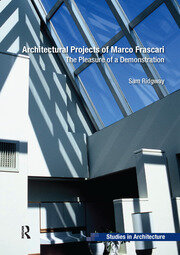ABSTRACT
Anthropomorphism is elemental, and in Marco Frascari's vision, the human body becomes a designated element within the design process. Frascari spent his early life in the sensuous architectural embrace of northern Italian buildings, towns and cities. In the Western tradition, this architecture and urbanism is unparalleled in its anthropomorphic qualities. Frascari's knowledge of past anthropomorphic practices, and his suggestion that we need to develop metonymical modes of achieving contemporary anthropomorphic practices, are a warning that we should avoid being too literal or too metaphorical in the pursuit of embodiment. Frascari uses many examples to illustrate Scarpa's anthropomorphic practice, encapsulating as it does the desire to ensure that his buildings responded to human desires, senses, needs and attributes. Valeriano Pastor developed a technique for impressing human attributes into the design of his buildings based on the use of particular types of body-images in his drawings.


